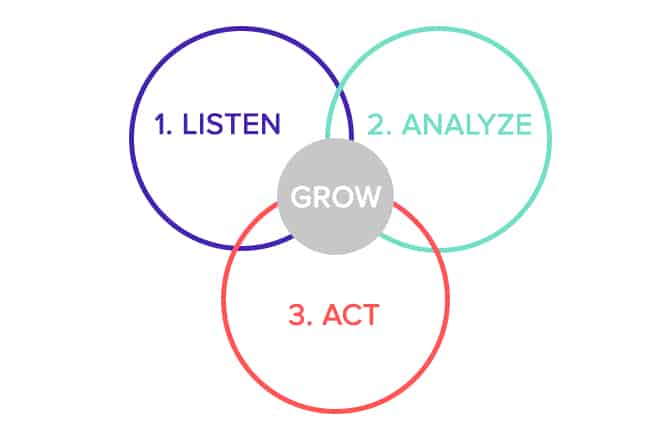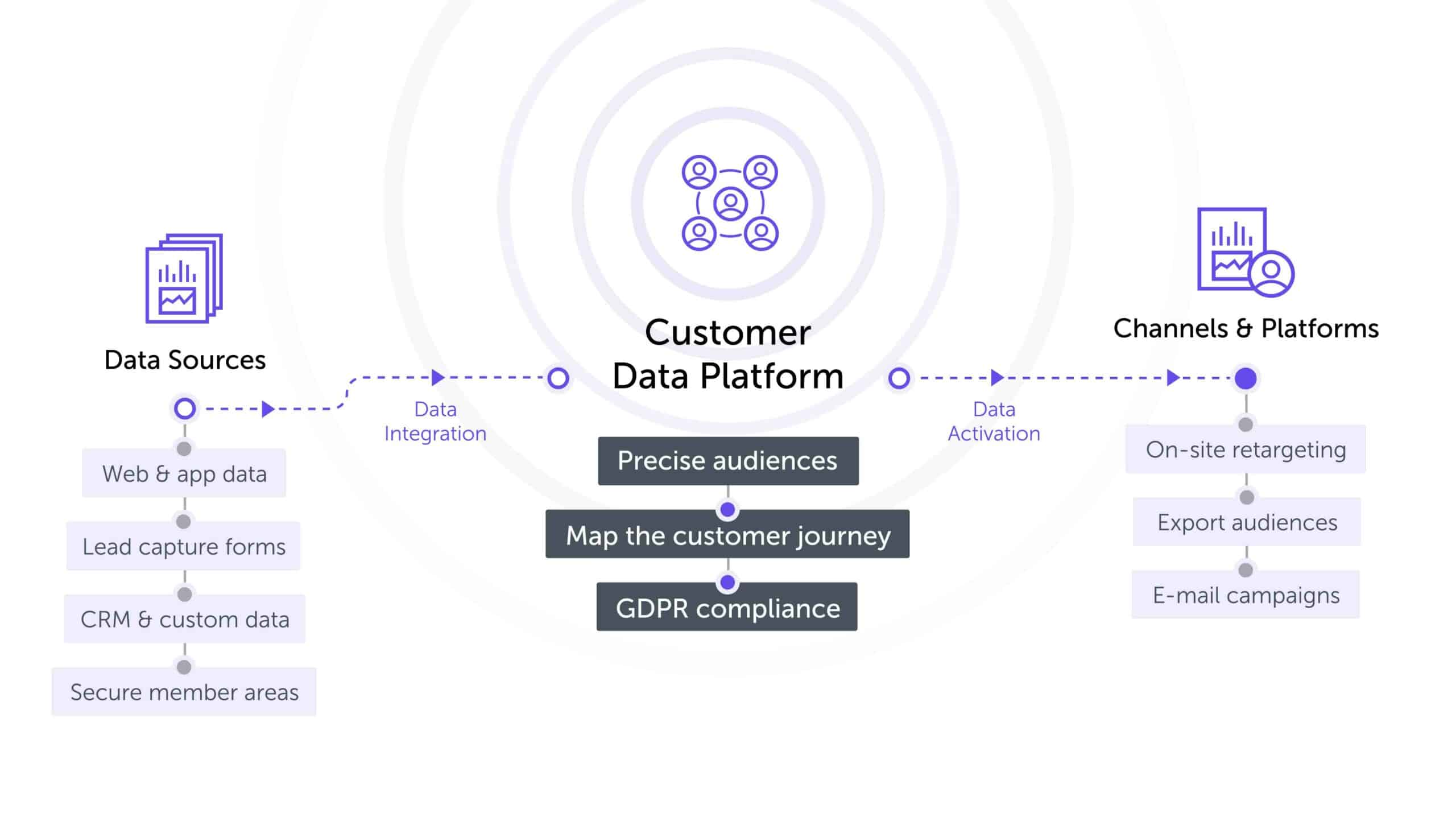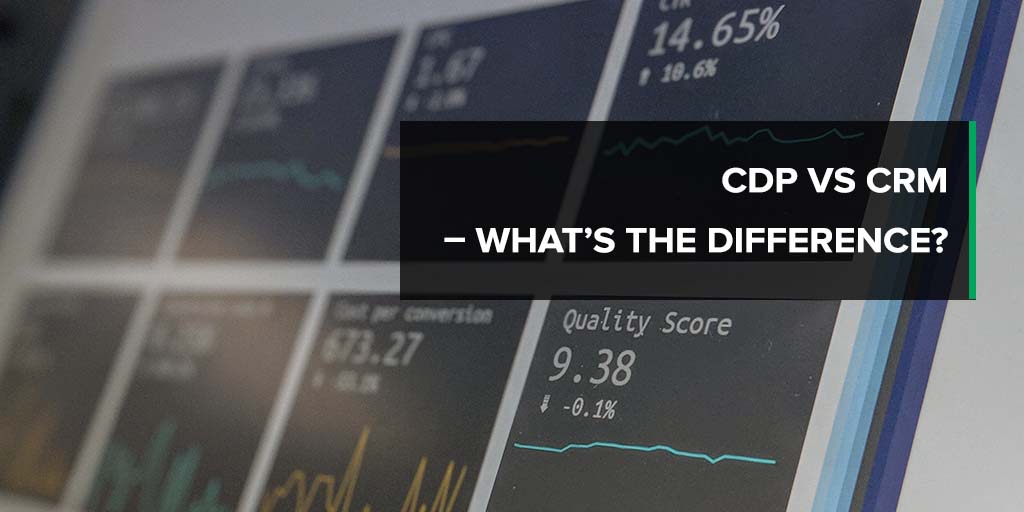Today, more than ever, companies need a tool to centralise and unify their customer data. This could be CRM software (Customer Relationship Management) or CDP (Customer Data Platform). You’ve probably already heard of CRM, maybe your company already uses one. CDP on the other hand is a more recent and less well-known tool. Some believe...
Today, more than ever, companies need a tool to centralise and unify their customer data. This could be CRM software (Customer Relationship Management) or CDP (Customer Data Platform). You’ve probably already heard of CRM, maybe your company already uses one. CDP on the other hand is a more recent and less well-known tool.
Some believe that CDP will eventually replace CRM. Before entering this debate, it is important to understand the difference between CDP and CRM, which is the subject of this article.
CRM is at the Heart of Customer Information Systems
Companies use CRM (Customer Relationship Management) software to manage their customer interactions in a centralised manner.

CRM is used to centralise customer data
But CRM is not only used to communicate with customers at different touchpoints of the customer journey. CRM software is also often used to centralise a company’s customer data.
CRM software therefore acts as both a database and a tool to “activate” this data through marketing, customer relationship or customer service actions.

There are several types of CRM
The nature of the data managed by a CRM depends on the company’s activity and the type of CRM being used.
Below are two of the main types:
- Sales CRM, used to manage the relationship with B2B leads and clients – quotes, orders, invoices, schedule, appointments (SAP, Pipedrive, etc.).
- Marketing CRM, used to manage marketing campaigns and scenarios (Adobe Campaign, Selligent, etc.). Most marketing CRMs are B2C.
There are therefore several types of CRM, but they are all often used as the company’s main customer database. CRM is generally at the heart of a company’s customer information system.
Data is the fuel that powers CRM
The challenge for companies is to feed their CRM software with fresh and qualitative customer data. CRM software is only as powerful as the quality and quantity of data it stores. Data is the fuel. It enables you to personalise and target your customer relationship. You cannot move forward without this fuel, no matter how powerful your software may be.
Aware of this challenge, MyFeelBack has developed native connectors with the main CRM solutions on the market: Salesforce, Microsoft Dynamics, HubSpot, Splio, etc.
Our mission – to enrich your customer relationship management solution with data!

These connectors allow you to set up real-time data flows between your CRM solution and MyFeelBack account in just a few clicks. Once these flows are in place, you can synchronise the answers to your MyFeelBack surveys in the fields of your CRM customer files or CRM reports, and even trigger automatic alerts directly in your CRM.
The Emergence of a New Kind of Tool – CDP (Customer Data Platforms)
Over the past few years, a new kind of tool has emerged, Customer Data Platforms, or CDP. What is CDP ? Where do they come from?
Some CDPs are former Data Management Platforms (DMP), converted into… CDPs. Others are new players on the MarTech market. Imagino, Camp de Base, Ysance and NP6 are a few examples of Customer Data Platforms.
CDP is a platform designed to centralise customer data from all collection sources and channels.

Credit: piwik.pro
“Centralising” is not, in fact, the right term, but rather “unifying”. CDP processes the data it integrates in order to standardise, deduplicate and attach it to persistent customer profiles. CDP is a unique customer repository.
The differences between CRM and CDP
CDP and CRM present several differences:
- Beyond a marketing database, CRM is above all an activation tool used to manage customer interactions. CDP, on the other hand, is designed first and foremost as a customer repository, although certain CDPs are used as CRMs.
- CDP has far more advanced data processing functions than CRM software. CDP is used to standardise, deduplicate and clean data, as well as create segments, aggregates, scorings, etc.
- CRM cannot manage all kinds of data. Data from digital technology is currently poorly managed. CDP, on the other hand, has the capacity to integrate all kinds of data.
Benefit from a 360° customer view
A company’s collection sources are fed upstream into their CDP. The data is then redistributed downstream to the company’s activation tools, in particular their CRM, email solution, marketing automation, customer service software, etc.
CDP is therefore not only a data receiver – it’s also a platform that processes data and delivers it to the tools that make up the company’s marketing stack.

In a world where companies’ marketing stacks are getting bigger and bigger, it is important to find a tool that unifies customer data, in order to benefit from a “360° customer view”. CDP often fulfils this role more effectively than traditional CRM software, even if the CRM market is changing to meet these new business challenges.
We discussed above how MyFeelBack can “push” data to your CRM via connectors. The data flows from MyFeelBack to your CRM.
The data flow is different with a Customer Data Platform. CDP retrieves the data in MyFeelBack (pool).
Our MyFeelBack solution can be used to feed your CRM software and your CDP platform. We are constantly adapting to the changing MarTech market and are particularly mindful of our clients’ new needs. Our mission is to help you collect qualified customer data using smart surveys to increase your customer knowledge and enrich your relationship actions.








